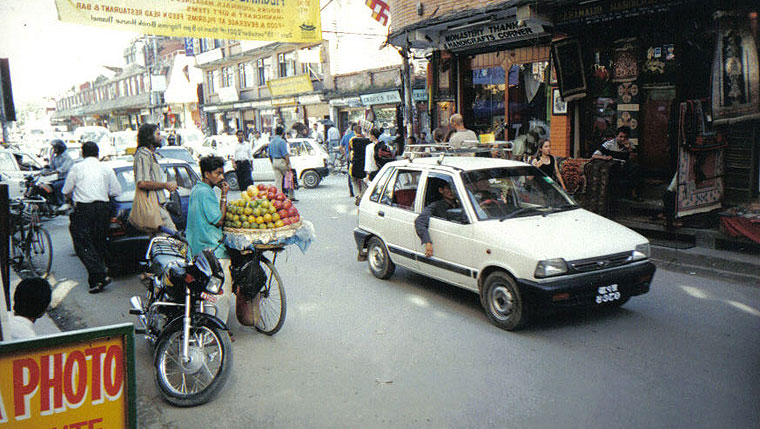|
|||||
 |
|||||
A
local in deep prayer |
|||||
 |
|||||
Kathmandu is a sprawling city careening toward the future with no plan and little apparent care. Cars and motorcycles now jam the narrow, winding medieval streets, robbing some parts of the city of their inherent charm and beauty, and polluting the atmosphere to an appalling degree. The city retains its exotic appeal, but the environment is much more hostile. |
|||||
 |
|||||
Young
apprentices marching their way to religious classes. |
|||||
It's impossible to stroll along to narrow streets without being beeped at and even nudged by a constant traffic stream of rickshaws, motorcycles, and small cars. During the dusty time of year, as one approaches a rising cloud of traffic-whipped dust composed primarily of noxious exhaust fumes, but laden with essence of dead dog and human expectoration, the only reasonable impulse is to stop breathing. In fact, walking around holding one's breath isn't a bad idea, and though lots of people carry surgical masks to protect themselves, for most, the dork-factor is just too high to actually wear them in public. So everyone enjoys the city as best they can, relishing warm showers and beds and hoping they eventually get to Lukla without taking a nasty upper respiratory infection along. While in Kathmandu, we stayed at the Tibet Guest House, a two star hotel in the tourist district of Thamel. We explored for a day. We took an early morning walk to Swayambhunath and had the opportunity to catch the Lamas reciting their morning Mantras. After breakfast at the hotel, we proceeded for sightseeing of Boudhanath (the centre of Buddhism in Kathmandu with the largest Buddhist stupa in the world and Pashupatinath, the holiest of Hindu shrines in Nepal. We visited Patan with its magnificent temples. Click Next |
|||||
Above:
The Boudhanath Stupa. The largest in the world. |
|||||
| Below: Busy street in Thamel. | |||||
 |
|||||
